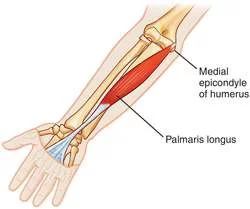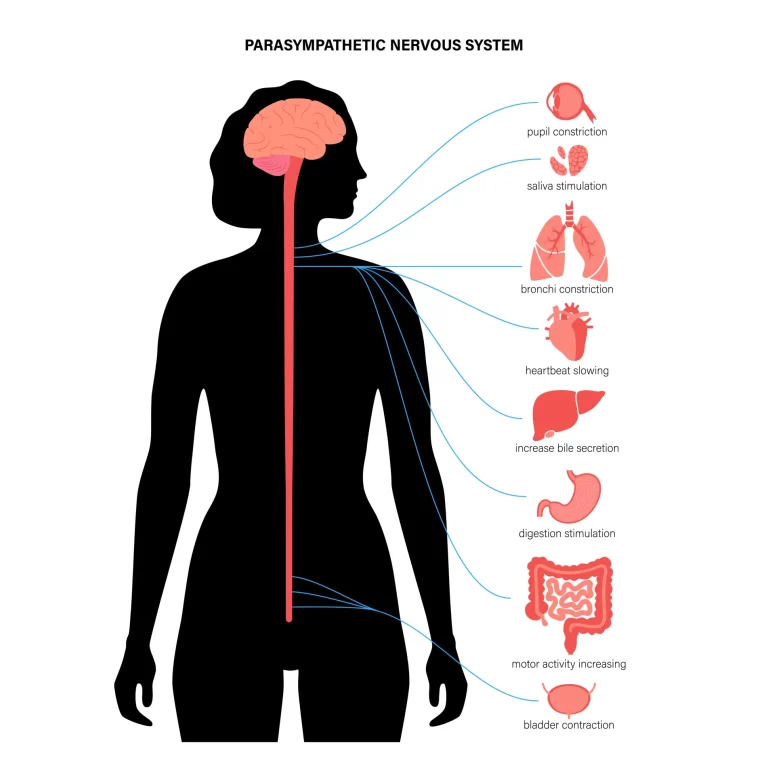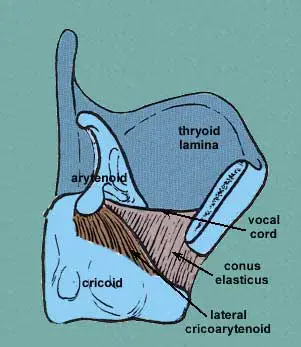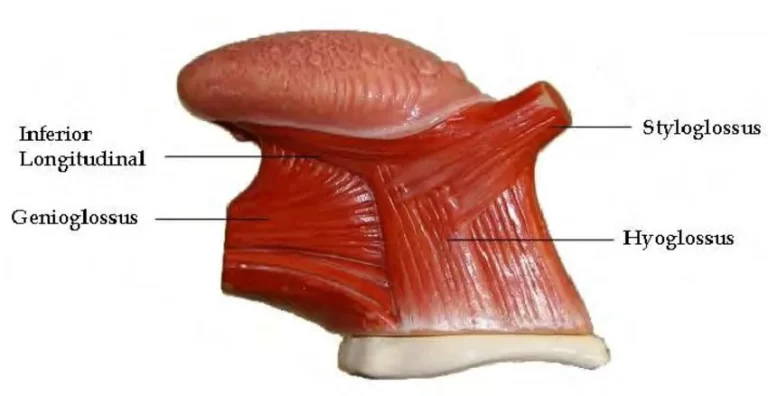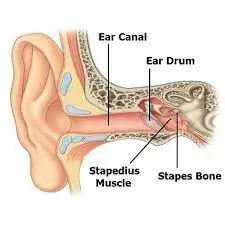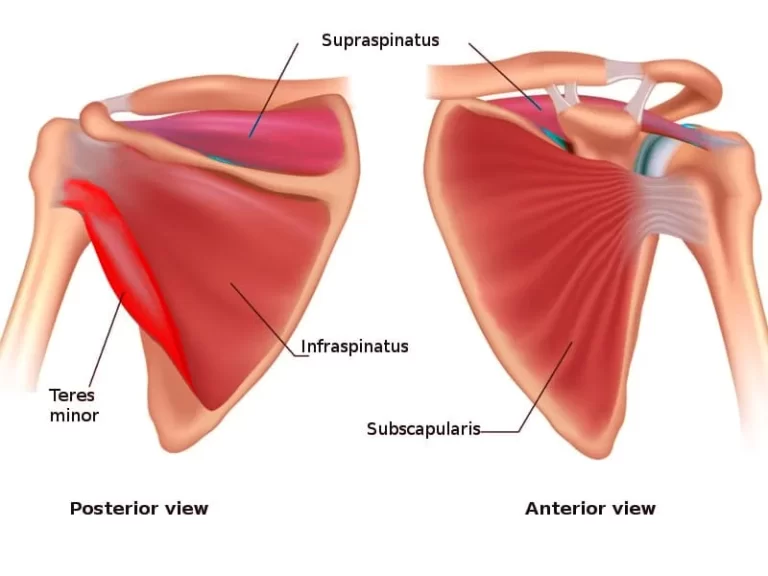Palmaris Longus Muscle
Table of Contents
Palmaris longus Muscle Anatomy
The palmaris longus is a muscle visible as a small tendon between the flexor carpi radialis and the flexor carpi ulnaris, although it is not always present.
About 14% of people do not have it; however, communities of African, Asian, and Native American people may have different percentages. Grip strength is unaffected by the lack of the palmaris longus. The fourth and fifth fingers’ pinch power actually is diminished due to the absence of palmaris longus muscle. In more females than in males, the palmaris longus muscle is absent.
By bending the wrist and contacting the pads of the thumb and fourth finger, one may see the palmaris longus muscle. If there is a tendon, it will be seen in the anterior wrist’s midline.
The medial side of the flexor carpi radialis is the location of the spindle-shaped, thin, elongated muscle known as palmaris longus. The proximal and distal attachments are where it is the smallest, while the center is where it is the broadest.
Origin
It originates from the medial epicondyle of the humerus.
Insertion
It inserts into the flexor retinaculum and palmar aponeurosis.
Blood Supply
Blood supply to the palmaris longus muscle comes from a branch of the anterior ulnar recurrent artery, itself a branch of the ulnar artery. If the median artery is well developed, it contributes to the blood supply as well.
Nerve supply
The median nerve supplies the muscle.
Action
It acts as the flexor of the wrist joint.
Function
Palmaris longus aids the flexor carpi ulnaris and flexor carpi radialis muscles to perform a balanced flexion of the hand on the wrist. It also acts to stabilize the elbow joint when fully extended, as the other forearm muscles attach to the humerus and thus cross the elbow joint.
Fibers attaching to the palmar aponeurosis tighten this fascial sheath during the muscle’s contraction, resulting in a weak flexion of the 2nd to 5th metacarpophalangeal joints as the aponeurosis is being pulled towards the wrist. Tightening of the palmar aponeurosis also contributes to maintaining the hand’s grip while holding certain objects.
Relations
Located deep under the forearm epidermis, the palmaris longus muscle is the most superficial of the superficial forearm flexors. It is superficial to the flexor digitorum superficialis muscle and situated between the flexor carpi radialis and flexor carpi ulnaris muscles.
The median nerve runs between the tendons of the flexor carpi radialis and palmaris longus, which are situated just proximal to the wrist. The median nerve is situated just beneath the palmaris longus tendon at the wrist level.
Palmaris Longus Muscle Exercises
Strengthening Exercise of Palmaris Longus Muscle
1. Towel Wring:

- Soak the towel in water so it’s completely damp.
- Roll the towel up so it’s a cylinder. Beginning with an overhand grip, grasp the towel with both hands.
- Wring the towel out by twisting it. Twist the towel with your left hand towards you and the right hand away from you.
- Complete the movement, switching directions alternatively for 30 seconds. Complete 3 sets with a break in between.
Stretching Exercise:
1. Palmaris Longus Stretch:
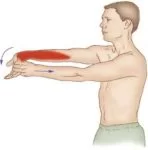
- To stretch your wrist flexors, begin by holding your right arm straight out in front of you. The palms of your hands should face outwards.
- Take your left hand, hold the fingers of your right hand, and bend them backward. You should feel the stretch on the inside of your right forearm.
- Hold the stretch for 10-15 seconds, repeating as needed.
Variations
One variable muscle is the palmaris longus. The lack of it is the most typical variant. The existence or lack of the PL tendon in various ethnic groups has been shown by a number of in vivo and in vitro investigations. It has been found that the PL tendon is absent in 5.5–24% of Caucasian people (European and North American) and 4.6–26.6% of Asian groups (Chinese, Japanese, Indian, Turkish, and Malaysian).
Its shape is also subject to alterations. It might have two muscular bundles with a central tendon, be muscular in the middle with a tendon above and below, or just be a tendinous band. Lastly, it could be made entirely of muscles. There might be two muscles or none at all. It has been observed that the origin might come from either the radius or the coronoid process. It has been found to intrude partially or completely into the flexor carpi ulnaris and pisiform bone tendon, the scaphoid, the little finger muscles, and the fascia of the forearm.
Examination tests to check the presence of the Palmaris Longus Muscle
Practitioners from all around the world have created a number of clinical tests throughout the years to precisely identify the Palmaris Longus muscle. To place the muscle in a tense condition where its tendon is both tactile and visible, these tests only require specific wrist and hand postures. However, there are differences across the tests in terms of their validity and reliability.
Standard Test – Schaeffer’s Test
The first exam was created in 1909.
involves keeping the forearm at a 90-degree angle and then opposing the thumb’s movement towards the little finger while partially flexing the wrist.
Thompson’s Test
The manoeuvre involves clenching the testing hand into a fist, then flexing the wrist against the resistance while keeping the thumb bent over the remaining fingers.
Mishra’s Test
Involves somewhat active wrist flexion in addition to passive hyperextension of the metacarpophalangeal joints.
Gangata’s Test
Thumb abduction is the initial testing posture. Next, the participant is instructed to resist wrist flexion and thumb abduction.
“Two Finger Sign” – Pushpakumar’s Test
The first digit is fully extended and flexed, and the participants are required to fully extend the second and third digits, flex the fourth, and flex the fifth.
“Four Finger Sign”
Combines complete extension of the second to fifth digits with forceful anteduction and pronation of the thumb at the first MCP.
Related pathology
In the case of ulnar nerve neuropathies, idiopathic ulnar tunnel syndrome is rare, and extrinsic causes have been identified. Anomalous muscles include the Palmaris Longus, Abductor Digits Minimi, and Flexor Carpi Ulnaris. In both Median and Ulnar nerve neuropathies, Palmaris longus is seen to be a common contributor to the pathological process.
Surgeons in particular place much of significance on the Palmaris Longus tendon since it is frequently used as a tendon graft in procedures involving tendon transfer and repair in the upper limb. This muscle is perfect for usage during surgical operations because it is an auxiliary muscle and its absence has not been found to cause any functional loss in grip or pinch strength.
Because the palmaris longus tendon is sufficiently long (12–15 cm) and its tendon fibres are parallel and loosely attached, it has been utilized to fix claw-finger malformations. The palmaris longus tendon was often used to correct hand deformities in leprosy patients.
The palmaris longus tendon has been utilized to treat radial palsy and opponensplasty. It has also been discovered that the palmaris longus muscle is strong enough to replace paralyzed lumbricals.
FAQ
The fourth and fifth fingers’ pinch power actually is diminished due to the absence of palmaris longus muscle. In more females than in males, the palmaris longus muscle is absent. By bending the wrist and contacting the pads of the thumb and fourth finger, one may see the palmaris longus muscle.
Therefore, when the palmaris longus tendon becomes split, we recommend having it repaired. If there is a single cut at the wrist or at the musculotendinous junction, the repair should be taken into consideration. The tendon may curl up and become a useless mass if the muscle retracts after the tendon is severed.
One potent independent risk factor for carpal tunnel syndrome is the palmaris longus tendon.
This muscle’s function is to assist with wrist flexion. One of the body’s most unpredictable muscles is the palmaris longus. While its function is thought to be minor in the upper limbs, it plays a vital role in tendon grafting.
The location of the median nerve during surgery is determined by the existence of this muscle’s tendon in the wrist. The loss of the PL muscle is only a genetic phenomenon.

